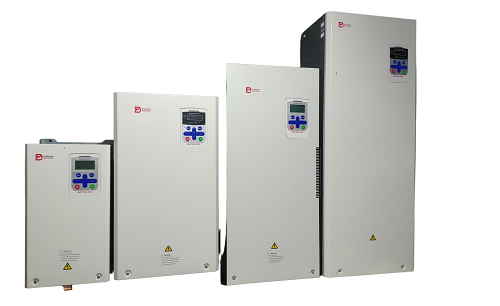Posted on 1st Aug 2024

In the evolving landscape of industrial automation, power inverter AC drives have become essential for enhancing the performance and efficiency of industrial processes. These drives, also known as variable frequency drives (VFDs) or adjustable frequency drives (AFDs), offer unparalleled control over electric motors, enabling industries to achieve significant operational improvements. This article explores the role of industrial power inverter AC drives, their benefits, key applications, and future trends shaping their development.
An industrial power inverter AC drive is an electronic device used to control the speed and torque of an AC motor by varying the frequency and voltage of its power supply. By converting the incoming AC power into DC and then back into controlled AC at a desired frequency, these drives allow for precise control over motor operation. This capability is crucial for optimizing industrial processes, reducing energy consumption, and extending equipment lifespan.
Energy Savings: One of the most significant advantages of power inverter AC drives is their ability to reduce energy consumption. By adjusting motor speed to match the load requirements, these drives avoid the energy waste associated with running motors at constant speeds regardless of demand.
Enhanced Process Control: Power inverter AC drives offer precise control over motor speed and torque, which is essential for applications requiring accurate and reliable performance. This enhanced control improves the overall quality of industrial processes and products.
Extended Equipment Life: By providing smoother starts, stops, and transitions, power inverter AC drives reduce mechanical stress on motors and associated equipment. This helps in minimizing wear and tear, leading to longer equipment life and reduced maintenance costs.
Improved System Reliability: These drives often come with advanced diagnostic and protection features that help in monitoring the health of the motor and drive system. This proactive approach to maintenance helps in identifying and addressing potential issues before they result in system failures.
Reduced Harmonic Distortion: Industrial power inverter AC drives can be equipped with filters to minimize harmonic distortion, which can lead to better power quality and reduced interference with other electrical equipment.
Flexibility and Scalability: Power inverter AC drives can be easily integrated into various industrial systems and scaled to meet changing requirements. This flexibility makes them suitable for a wide range of applications across different industries.
Pumping Systems: In industries such as water treatment, oil and gas, and chemical processing, power inverter AC drives regulate the speed of pumps to match demand, optimizing flow rates and reducing energy consumption.
HVAC Systems: In heating, ventilation, and air conditioning (HVAC) systems, these drives control the speed of fans and compressors, enhancing climate control and improving energy efficiency.
Conveyor Systems: Power inverter AC drives are used in conveyor systems to adjust speed and direction, facilitating smooth material handling and improving operational flexibility.
Centrifuges and Mixers: In industries such as pharmaceuticals and food processing, these drives provide precise control over the speed and torque of centrifuges and mixers, ensuring consistent product quality and process efficiency.
Manufacturing Equipment: Industrial power inverter micro drives are integral to various manufacturing processes, including CNC machines, extruders, and presses, where they enable precise control and improve overall productivity.
Textile and Printing Industries: These drives are used in textile machinery and printing presses to control motor speeds, ensuring accurate and consistent production processes.
Integration with Smart Technologies: The integration of power inverter AC drives with IoT and smart technologies is transforming industrial automation. This enables real-time monitoring, predictive maintenance, and enhanced control, leading to more efficient and responsive operations.
Advanced Semiconductor Materials: The development of advanced semiconductor materials like silicon carbide (SiC) and gallium nitride (GaN) is expected to improve the performance and efficiency of power inverter AC drives, allowing for higher switching frequencies and reduced losses.
Energy Efficiency Standards: As industries face increasing pressure to reduce energy consumption and carbon footprints, power inverter AC drives will play a critical role in meeting stringent energy efficiency standards and contributing to sustainability goals.
Enhanced User Interfaces: Future drives are likely to feature more intuitive and user-friendly interfaces, including advanced touchscreen displays and mobile app integration, making it easier for operators to configure and monitor drive performance.
Enhanced Safety Features: The incorporation of advanced safety features, such as real-time diagnostics and fault prediction, will further enhance the reliability and safety of power inverter AC drives in industrial applications.
Industrial power inverter Darwin Motion AC drives offered by CM Industry Supply Automation are vital components in modern industrial systems, offering significant benefits in terms of energy efficiency, process control, and equipment longevity. Their ability to adapt to varying load conditions and provide precise control makes them indispensable in a wide range of applications. As technology continues to advance, power inverter AC drives will evolve, incorporating new features and capabilities that will further enhance their impact on industrial efficiency and performance.